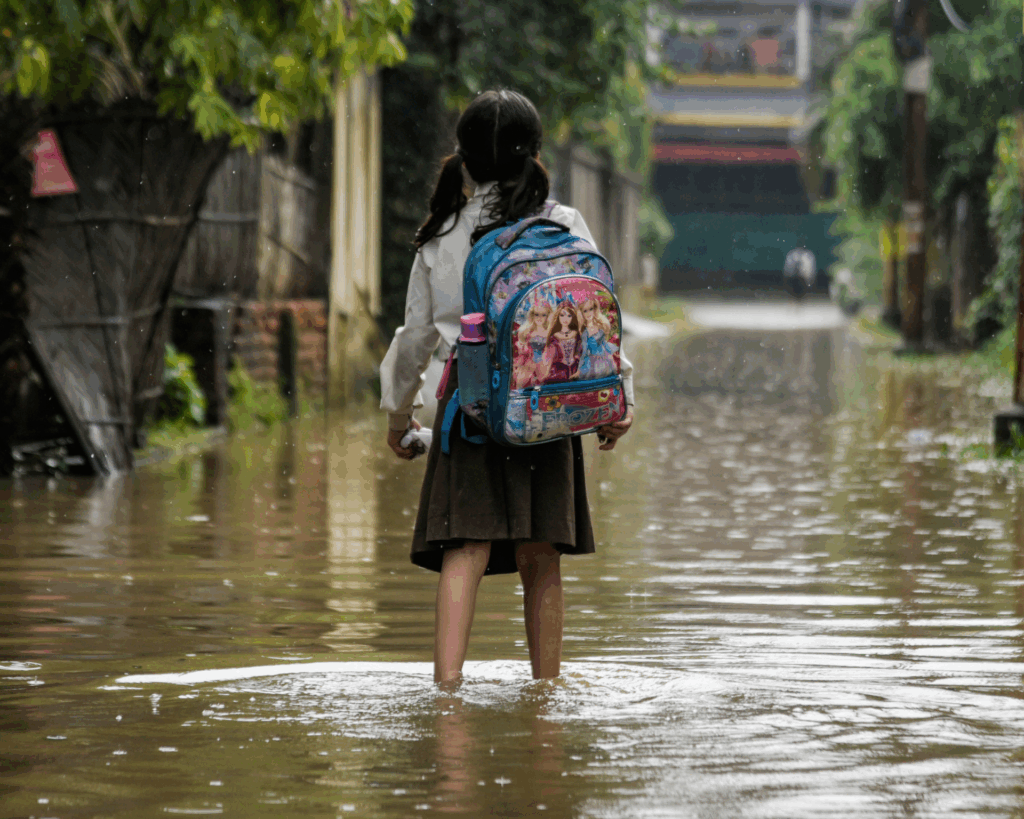Contaminating Children
Current guidance from the EPA considers lead concentration in soil below 100 ppm as a low-risk category despite significant risks for children.

Read Time: 4 minutes
Published:
Although lead is banned from gasoline, paint, and other substances in the United States and many other countries around the world, the legacy of lead use remains a critical environmental and public health challenge. Soil contamination has long been long recognized as an important pathway of human lead exposure.
Emissions by on-road vehicles have played a major role in the accumulation of lead in topsoil. Over 10 million metric tons of lead were transferred to the global environment by motor vehicles in the 20th century. Sixty percent of that total was dispersed in the United States alone. Elevated lead concentrations in soil are likely to remain high for hundreds of years. Wind or other disturbances of lead contaminated topsoil can increase air lead levels and redistribute lead to topsoil in nearby areas.
Children are at risk for cognitive impairment, even at low levels of lead exposure. Contaminated soil in streets, yards, playgrounds, and urban gardens where children play carries the greatest risk. Increases in soil-lead are associated with higher blood lead levels in infants and young children. Despite the potential harm associated with lead in topsoil, virtually all of the attention around lead and children has focused on lead in paint and drinking water.
In addition to a lack of attention, lead in topsoil receives little regulatory scrutiny. While the Environmental Protection Agency (EPA) publishes recommendations for soil-lead, EPA thresholds for concern are far above typical values. The threshold for residential soil-lead is 400 parts per million (ppm) and 100 ppm for gardening. In comparison, the median county soil-lead level in our sample is 23 ppm. One reason for the lack of attention to soil-lead levels may be the high thresholds, since the presumption is that values below the 100 ppm are safe.
Our paper provides new evidence of the damaging effect of lead on cognitive development, even in areas with relatively low soil lead levels.
How does soil-lead exposure effect the cognitive function of young children? In a recent study published in Economics and Human Biology, my co-authors Margarita Portnykh, Edson Severnini, and I addressed this question. We drew on data from five-year-old children from the US 2000 Census and data from the US Geological Survey on lead in topsoil.
Our analysis focused on answers to a question intended for individuals five years and older: “Because of a physical, mental, or emotional condition lasting six months or more, does this person have any difficulty learning, remembering, or concentrating?” Our approach compared children living in above- and below-median soil-lead counties. To address any differences across counties due to other factors, our analysis included a wide range of controls for county, child, and household characteristics. Further, the analysis leveraged historical differences in lead emissions from gasoline, which are important determinants of whether a county is above or below the median in soil-lead.
While we found that five-year-old boys living in a county with soil-lead levels above the national median had a higher probability of cognitive difficulties, we found no effects on girls. This finding holds across a range of alternative specifications and measures of lead in soil. Our results are consistent with previous findings from other epidemiological and experimental studies showing that exposure to lead affects males more than females. The underlying biological causes of these gender differences are currently not well-understood.
Our paper provides new evidence of the damaging effect of lead on cognitive development, even in areas with relatively low soil lead levels. Current guidance from the EPA considers lead concentration in soil below 100 ppm as a low-risk category with no need for specific action of remediation. Our paper suggests that soil-lead levels below 100 ppm carry significant risks for children. This research and research by other authors highlights the need for the EPA to set more stringent thresholds for soil-lead.
Photo by Markus Spiske on Unsplash



